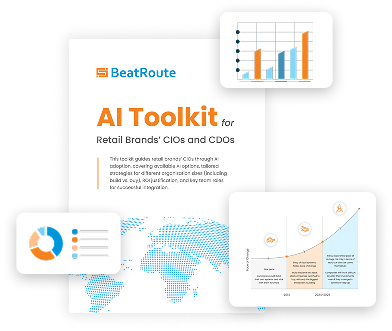The Impact of Digital Technologies on Trade Marketing for CPG Brands

In a world where digital transformation is reshaping the landscape, we’ve gathered nine insights from CEOs and directors on how this revolution is affecting trade marketing strategies for CPG brands.
From exploring augmented reality’s untapped potential to understanding how omnichannel campaigns drive conversions, these industry leaders share their valuable perspectives on the evolving retail distribution scene.
Exploring Augmented Reality’s Untapped Potential
I believe that the integration of AR in retail, particularly for CPG brands, is a trend that’s just scratching the surface of its potential and is poised to become a significant trend in the near future. While there are already applications that allow consumers to scan products for information, their current usage is not fully optimized. This gap presents a significant opportunity for growth and innovation.
The current applications of AR in retail are somewhat rudimentary. They often provide basic information, perhaps nutritional facts or origin details for CPG items. However, the true potential of AR lies in its ability to offer a much richer, interactive experience. The potential for AR to offer personalized experiences is particularly exciting. Imagine a scenario where scanning a product with your smartphone doesn’t just tell you about its ingredients or manufacturing process but also shows you how it fits into your lifestyle or dietary preferences.
– Damian Kwinta, SEO Manager Cee, PRM.com
Broadening CPG Marketing Strategies
I think that it’s naturally increasing the levels of competition that CPG brands are up against, and it increases the workload for the brand to position themselves as an authority in their space. Brands must really hone in on their marketing across social channels as well as their website, rather than focusing singularly on marketing directly to trade.
– Wendy Makinson, HR Manager, Joloda Hydraroll
Smart Packaging Building Trust
In today’s digital world, trust and transparency are crucial for brands, especially for consumer-packaged goods (CPG) brands in retail. Consumers now expect more from brands, such as how they impact society, the environment, and their communities. To meet these expectations, brands need to be open about their impact on wider societal issues, including their supply chains.
One way to build trust is through smart packaging, which uses technology to improve supply chain transparency. For example, Barilla, an Italian food company, has made its supply chain traceable. They use QR codes on their packaging that customers can scan. This takes them to a website where they can see every step of the product’s journey, from where the wheat was grown to how it was processed and transported to the store. This level of detail, including information about the wheat’s origin, the harvest, and even the mill, helps build consumer trust.
– Precious Abacan, Digital Marketing Manager, Softlist
AI Predicting Consumer Behavior
Algorithmic Assortment Agility has profoundly transformed how we approach trade marketing for consumer-packaged goods (CPG) brands in retail distribution. In our outdoor gym equipment business, we’ve seen firsthand the shift toward data-driven strategies.
Recently, we utilized algorithmic insights to tailor our product range for specific demographic segments, resulting in a 20% increase in targeted customer engagement. This approach, leveraging real-time data, allows for agile adjustments to our offerings, ensuring they resonate with current consumer trends.
An emerging trend I foresee is the heightened integration of AI in predicting consumer behavior, further refining this strategy.
– Lucas Riphagen, Co-Owner, TriActiveUSA
Employing Machine Learning Algorithms
Digital transformation has significantly influenced trade marketing strategies and execution for consumer-packaged goods (CPG) brands in retail distribution. One key impact is the shift toward data-driven decision-making and the utilization of technology to enhance various aspects of trade marketing.
An emerging trend in trade marketing for CPG brands is the use of artificial intelligence (AI) for predictive analytics. By employing machine learning algorithms, brands can forecast consumer trends, optimize inventory management, and predict the success of different marketing strategies. This proactive approach allows brands to stay ahead of market changes and adjust their trade marketing efforts in real-time.
– Faizan Khan, Public Relations and Content Marketing Specialist, Ubuy UK
Personalizing Campaigns Through AI
Digital transformation is significantly impacting trade marketing strategies for CPG brands, especially in the realm of data analytics and personalized marketing. One specific insight is the use of AI and machine learning to analyze consumer behavior and preferences, allowing brands to create highly targeted marketing campaigns.
An emerging trend I predict is the increased use of augmented reality (AR) in retail spaces, enabling customers to interact with products virtually before purchase. This not only enhances the customer experience but also provides brands with valuable data on consumer interactions and preferences.
– Einav Biri, CEO, FARUZO
IoT Revolutionizing Retail Shelves
Digital transformation is reshaping trade marketing for CPG brands in retail, much like how smartphones reinvented communication.
A standout trend is the integration of IoT (Internet of Things) with retail shelves. Imagine smart shelves that not only track inventory in real-time but also gather shopper behavior data. This technology allows brands to dynamically adjust their marketing and stock based on immediate consumer interactions and preferences.
It’s like having a live feedback loop directly from the shelf, ensuring that marketing strategies are as responsive and efficient as possible. This trend is turning retail shelves into smart, data-driven marketing platforms, revolutionizing how CPG brands engage with customers at the point of purchase.
– Alex Stasiak, CEO and Founder, Startup House
Omnichannel Campaigns Driving Conversions
Brands and retailers are increasingly embracing digital transformation. The rise of digital in-store advertising offers unprecedented accessibility and valuable data collection opportunities. This data can inform strategic decisions on brand positioning, pricing, and growth.
Retail giants like Walmart and Target are expanding their digital-retail presence, highlighting the importance of an integrated omnichannel campaign. Brands that effectively combine website, app, and in-store marketing are positioned to achieve higher conversion rates through this comprehensive, multi-touchpoint approach.
– Jason Vaught, Director of Content, SmashBrand
About the Author
-
Nikhil is a marketing professional with a passion for enterprise SaaS and the role that technology can play in helping businesses succeed. He is passionate about enabling digital transformation for retail brands, and explores how brands can enhance their sales execution and distributor engagement with the help of technology.
Use Goal-Driven AI to Achieve Retail Sales Uplift, Today!
Join enterprises in 20+ countries that trust BeatRoute, the globally dominant AI platform for sales force automation, field sales, DMS, and eB2B
Latest Insights & Articles
Here are the most impactful articles, platform updates, ebooks and reports for you.


